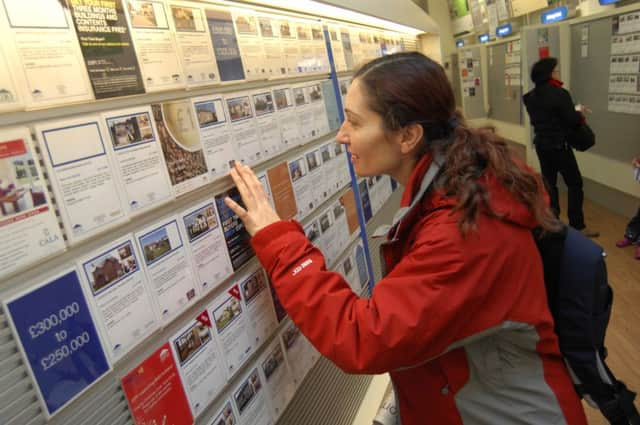Opportunity for tenants while landlords reserve judgement


The effect is that tenants looking to rent a property now may find themselves able to bag a bargain, after a slight spring slump in rent growth.
In absolute terms, this £3 annual increase means the average rent stands at £542 per month.
Advertisement
Hide AdAdvertisement
Hide AdHowever, this year-on-year snapshot hides the many price fluctuations we’ve seen between this April and last, and also isn’t uniform across the country.
The lettings market is always at the mercy of local supply and demand, and in Edinburgh and the surrounding areas we’re seeing extraordinarily fast rent rises as tenant competition shines brightest around the glow of the jobs market.
Going forward, supply and demand need to strike a lasting equilibrium to prevent rent growth taking off and leaving tenants by the wayside – and that’s a tall order in today’s regulatory environment.
On a monthly basis, rents are cheaper in all but one region of Scotland.
The Highlands and Islands witnessed the fastest drop in average rents in April, falling 1.7 per cent on March.
Meanwhile, Edinburgh and the Lothians is the only region to have experienced an increase in rents, which are up a solid 0.8 per cent month on month.
More homes to let are needed in the places where the jobs market has something to offer and a better balance of supply and demand is vital to iron out these obstacles.
Scotland needs landlords to keep investing and expanding the supply of rental homes – at the very time when the government is targeting them with regulatory weapons.
Advertisement
Hide AdAdvertisement
Hide AdOur readings of landlords’ financial returns over the last year are going a bit wayward at the moment – but it’s a matter of waiting now until the anomalies of last spring drop out of view.
With property prices climbing to a considerable peak before the introduction of the Land and Buildings Transaction Tax (LBTT) in April 2015, Scottish landlords haven’t seen any compelling capital growth in the past 12 months to complement their regular rental income.
As a result of this property value turbulence, in absolute terms the typical Scottish landlord has witnessed a paper loss, before mortgage payments or maintenance costs, of £8,600 in the last year.
This comes despite rental income standing at £5,900 for the past 12 months, with capital gains impacted by distorted sold house prices a year ago.
But that’s not to say recent buyers haven’t made a wise investment.
Existing landlords will have saved themselves an extra 3 per cent stamp duty on their buy-to-let purchase, which is something that all future landlords will have to factor into their financial planning.
While total annual returns are in a state of flux, gross yields are the constant keeping a remarkably steady course – and offering landlords a much fairer and sunnier picture of the investment case.
But with the new stamp duty surcharge comes a potential barrier to entry for many landlords and it remains to be seen if investment is scared off by this measure.
Advertisement
Hide AdAdvertisement
Hide AdIn Scotland, slower property price growth and the softer LBTT system may help to soothe some of these concerns, but anyone looking to start or grow a buy-to-let portfolio will have more financial factors to consider.
Brian Moran is the lettings director
at Your Move Scotland.